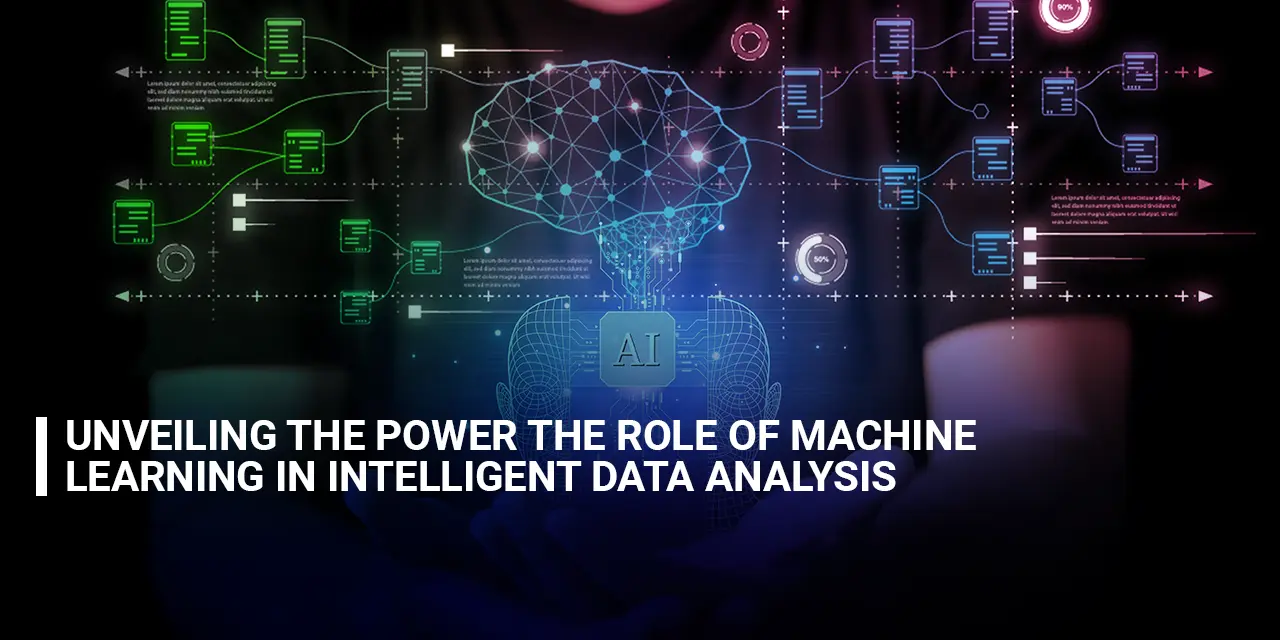Research
Share Knowledge
Brainstorm Ideas
I. Understanding Intelligent Data Analysis:
1. Foundations of Data Analysis:
Data analysis is the process of inspecting, cleaning, transforming, and modelling data to extract meaningful information, draw conclusions, and support decision-making.
Traditional data analysis methods have limitations in handling vast datasets and complex patterns.
2. Evolution to Intelligent Data Analysis:
Intelligent data analysis involves the integration of advanced technologies, including machine learning, to enhance the analytical process.
The goal is to move beyond basic insights and uncover nuanced patterns, correlations, and predictions within datasets.
II. The Essence of Machine Learning:
1. Fundamentals of Machine Learning:
Machine learning is a subset of artificial intelligence (AI) that focuses on developing algorithms and models capable of learning from data.
It encompasses supervised learning, unsupervised learning, and reinforcement learning, allowing systems to improve performance over time.
2. Role of Algorithms in Machine Learning:
Algorithms form the backbone of machine learning, enabling systems to process data, identify patterns, and make predictions.
Classification, regression, clustering, and reinforcement learning algorithms are pivotal in various machine learning applications.
III. Intersection of Machine Learning and Intelligent Data Analysis:
1. Enhancing Predictive Analytics:
Machine learning algorithms contribute to predictive analytics by learning patterns from historical data.
Predictive models enable organizations to anticipate trends, forecast outcomes, and make informed decisions.
2. Uncovering Complex Patterns:
Intelligent data analysis, powered by machine learning, excels in identifying intricate patterns within datasets.
Clustering algorithms can group similar data points, revealing hidden relationships and structures.
3. Feature Extraction and Dimensionality Reduction:
Machine learning techniques aid in feature extraction, reducing the complexity of datasets by highlighting relevant attributes.
Dimensionality reduction techniques, such as principal component analysis, streamline data while preserving essential information.
4. Automated Decision-Making:
Machine learning models enable automated decision-making based on learned patterns and real-time data.
This is particularly valuable in scenarios where rapid decisions are required, such as fraud detection or dynamic pricing.
IV. Applications of Machine Learning in Intelligent Data Analysis:
1. Healthcare Analytics:
Machine learning contributes to personalized medicine, disease prediction, and treatment optimization.
Intelligent data analysis in healthcare improves patient outcomes by leveraging vast datasets for diagnostics and prognostics.
2. Financial Data Modelling:
Predictive modelling in finance, empowered by machine learning, aids in risk assessment, fraud detection, and investment strategies.
Algorithms analyse market trends and historical data to inform investment decisions.
3. Customer Relationship Management (CRM):
Machine learning enhances CRM systems by predicting customer behaviour, recommending personalized products, and automating customer interactions.
Intelligent data analysis in CRM improves customer satisfaction and loyalty.
4. Supply Chain Optimization:
Predictive analytics and machine learning optimize supply chain management by forecasting demand, identifying bottlenecks, and enhancing logistics.
Intelligent data analysis in supply chain operations improves efficiency and reduces costs.
V. Challenges and Considerations:
1. Data Quality and Bias:
The quality of machine learning models is contingent on the quality of the underlying data.
Biases present in historical data can be perpetuated in machine learning models, leading to skewed outcomes.
2. Interpretability and Explain ability:
Complex machine learning models may lack interpretability, making it challenging to understand the rationale behind predictions.
Explainable AI approaches are crucial for ensuring transparency and accountability.
3. Data Privacy and Security:
Machine learning models trained on sensitive data pose risks to privacy if not adequately protected.
Robust security measures are imperative to safeguard sensitive information and maintain trust.
4. Continuous Learning and Adaptability:
Machine learning models should adapt to evolving patterns and changes in the data landscape.
Continuous learning and model retraining are essential for maintaining relevance and accuracy.
VI. Future Trends and Implications:
1. Advancements in Explainable AI:
Innovations in explainable AI aim to make complex machine learning models more interpretable.
Techniques such as model-agnostic interpretability and explainable neural networks enhance transparency.
2. Integration of Reinforcement Learning:
The integration of reinforcement learning into intelligent data analysis expands capabilities in dynamic decision-making.
Reinforcement learning is particularly promising in optimizing processes and resource allocation.
3. Ethical AI and Responsible Data Practices:
The ethical implications of machine learning in data analysis necessitate responsible data practices.
Organizations are expected to prioritize fairness, accountability, and transparency in their use of AI technologies.
4. Collaboration of Human and AI Expertise:
The future envisions a collaborative approach where human expertise and machine learning capabilities complement each other.
Augmented intelligence, combining human intuition with machine learning, is poised to drive innovation.
Conclusion:
In the symbiotic relationship between machine learning and intelligent data analysis, a new era of possibilities unfolds. As organizations harness the power of machine learning algorithms to analyse vast datasets intelligently, the potential for innovation, efficiency, and informed decision-making becomes limitless. Challenges in data quality, interpretability, and ethical considerations are addressed through continuous advancements and responsible AI practices. The future holds a landscape where the integration of human expertise and machine intelligence leads to a harmonious convergence, reshaping industries and propelling us into an era where data is not just analysed but truly understood.
How Can We Help?
ITPN has leading-edge capabilities, top-class experts and pioneering experience in this area so please contact us if you have any questions or need assistance of our services.

